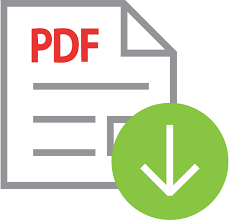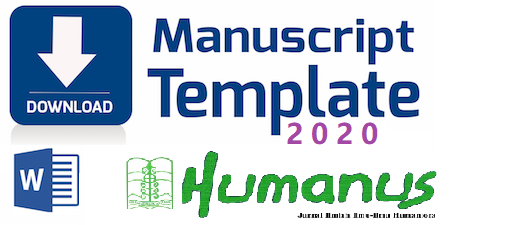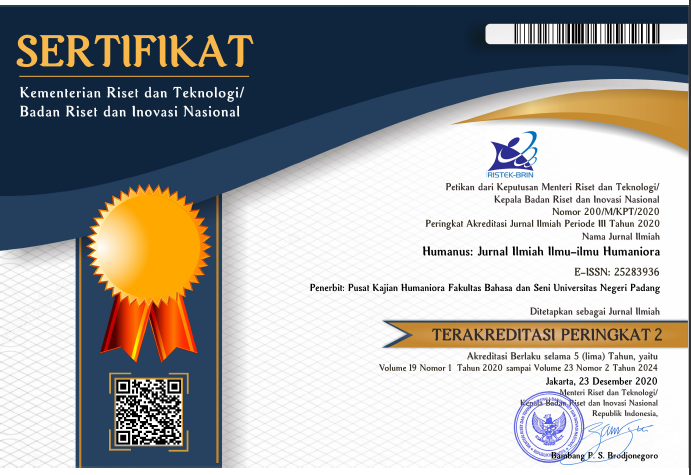Scrutinizing Metadiscourse Markers in the Gossip Columns of Lambe Turah and Insert Live: A Corpus Linguistic Study
 ), Mariah Anggraeni(4),
), Mariah Anggraeni(4), (1) Diponegoro University
(2) Diponegoro University
(3) Diponegoro University
(4) Diponegoro University
 Corresponding Author
Corresponding Author
Copyright (c) 2025 Prihantoro Prihantoro, Muhammad Hifni Sahila Rizqy, Lira Yusnidar, Mariah Anggraeni
DOI : https://doi.org/10.24036/humanus.v24i1.131396
Full Text:
 Language : en
Language : en
Abstract
Keywords
References
Ahmed, S. (2011). “Analyzing Women’s Talk and Gossip between Two Female Friends”. Leading Undergraduate Work in English Studies 3: 1-14.
Aini, N., & Ekawati, R. (2022). Metadiscourse Markers in CNN Health News Articles. Suar Betang, 17(1), 55–67. https://doi.org/10.26499/surbet.v17i1.329
Aini, Q. (2021). Ekspresi bahasa politik dikalangan menteri: studi analisis talk show Mata Najwa “gono-gini kursi menteri”. HUMANIKA, 28(1), 39–50. https://doi.org/10.14710/humanika.v28i1.36491
Al-Rashady, F. (2012). “Determining The Role of Hedging Devices in The Political Discourse of Two American Presidential Debates in 2008”. TESOL Journal 7: 30-42.
Atmadi, T. (1985). Sistem Pers Indonesia. Gunung Agung.
Azar, Betty Schrampfer. (1999). Understanding and Using English Grammar Third Edition. New York: Pearson Education.
Bax, S., Nakatsuhara, F., & Waller, D. (2019). Researching L2 writers’ use of metadiscourse markers at intermediate and advanced levels. System, 83(3), 1–38. https://doi.org/10.1016/j.system.2019.02.010
Biri, Y. (2017). Metadiscourse in Online Opinion Texts-Exploring Variation within a genre. MA Thesis, Department of Modern Languages, University of Helsinki. Retrieved from https://core.ac.uk/download/pdf/132491131.pdf.
Boer, K. M., Pratiwi, M. R., & Muna, N. (2020). Analisis Framing Pemberitaan Generasi Milenial dan Pemerintah Terkait Covid-19 di Media Online. Communicatus: Jurnal Ilmu Komunikasi, 4(1), 85–104. https://doi.org/10.15575/cjik.v4i1.8277
Degaf, A., Wijana, I., & Poedjosoedarmo, S. (2019). Textual analysis on celebrity news in the online media. LiNGUA: Jurnal Ilmu Bahasa dan Sastra, 14(2), 249– 260. https://doi.org/10.18860/ling.v14i2.7428
Duruk, E. (2017). Analysis of Metadiscourse markers in academic written discourse produced by Turkish researchers. Journal of Language and Linguistic Studies, 13(1), 1–9. www.jlls.org
Farnia, M., & Mohammadi, N. (2018). Cross-cultural analysis of interpersonal metadiscourse markers in persuasive local newspaper articles. Discourse and Interaction, 11(2), 27–44. https://doi.org/10.5817/DI2018-2-27
Foster, E. K. (2004). “Research on Gossip: Taxonomy, Methods, and Future Directions”. Journal of General Psychology 8 (2): 78-99.
Hardjanto, T. D. (2023). Hedging in Newspaper Headlines Written by Indonesian and American Writers. 10(2), 72–81.
Hasanah, U., & Wahyudi, R. (2016). Meaning-Making of Hedges in the Gossip Column of the Jakarta Post. Jurnal Humaniora, 27(2), 207. https://doi.org/10.22146/jh.v27i2.8717
Hayisama, F., Ahamad Shah, M. I., and Wan Adnan, W. N. A. (2019). Rhetorical style across cultures: an analysis of metadiscourse markers in academic writing of Thai and Malaysian students. LSP International Journal, 6(1), 19–37. https://doi.org/10.11113/lspi.v6n1.76
Hyland, K. (2005). Metadiscourse: Exploring Interaction in Writing. Continuum.
Hyland, K. (2017). Metadiscourse: What is it and where is it going? Journal of Pragmatics, 113, 16–29.
Ho, V., & Li, C. (2018). The use of Meta-discourse and persuasion: An analysis of first year university students’ timed argumentative essays. Journal of English for Academic Purposes, 33, 53–68. https://doi.org/10.1016/j.jeap.2018.02.001
Irham & Wahyudi. (2012). Treating disclaimer as a power strategy of self-legitimation and other-de-legitimation in Netanyahu’s UNGA speech. Language, Discourse & Society, 1 (2). pp. 89-106. ISSN 2239-4192
Jalilifar, A., Hayati, S., & Don, A. (2018). Investigating metadiscourse markers in book reviews and blurbs: A study of interested and disinterested genres. Studies about Languages, 2824(33), 90–107. https://doi.org/10.5755/j01.sal.33.0.19415
Juditha, C. (2018). Hegemoni Media Sosial: Akun Gosip Instagram @ LAMBE _ TURAH SOCIAL Jurnal Penelitian Komunikasi Dan Opini Publik, 22(1), 16–30.
Kuswoyo, H., & Siregar, R. A. (2019). Interpersonal metadiscourse markers as persuasive strategies in oral business presentation. Lingua Cultura, 13(4),
Lintang, N. S., & Jamil, A. (2021). The Students’ Reception of @Lambe Turah’s Gossip Account Posts in Public Relation Students at Mercu Buana University. EAI.
Lotfi, S. A. T., Sarkeshikian, S. A. H., & Saleh, E. (2019). A cross-cultural study of the use of metadiscourse markers in argumentative essays by Iranian and Chinese EFL students. Cogent Arts and Humanities, 6(1). https://doi.org/10.1080/23311983.2019.1601540
Mohamed, A. F. B., & Rashid, R. B. A. (2017). The metadiscourse markers in good undergraduate writers’ essays corpus. International Journal of English Linguistics, 7(6), 213. https://doi.org/10.5539/ijel.v7n6p213
Niekerk, V. J. (2008). “The Virtue of Gossip”. South Africa Journal of Philosophy 27 (4): 400-412. Nivales, M. L. M. (2005). “Hedging in College Research Papers: Implications for Language Instruction”. Asian EFL Journal 52: 35-45.
Ojo, O. E. (2020). Hedges and Boosters as Modality Markers: An Analysis of Nigerian and American Editorials. K@Ta, 22(2), 55–62. https://doi.org/10.9744/kata.22.2.55-62
Salager-Meyer, Françoise. (1994). Hedges and textual communicative function in medical English written discourse. English for Specific Purposes, 13(2), 149–171.
Siddique, A. R., Mahmood, M. A., & Iqbal, J. (2018) Metadiscourse analysis of PakistaniEnglish newspaper editorials: A corpus-based study. International Journal of English Linguistics, 8(1), 146–163. https://doi.org/10.5539/ijel.v8n1p146
Sudaryanto, S., Soeparno, S., & Lilis Ferawati. (2019). Politics of language in Indonesia (1975-2015): study of history and language policy. AKSIS: Jurnal Pendidikan Bahasa Dan Sastra Indonesia, 3(1), 129–139. https://doi.org/10.21009 /AKSIS.030113
Tijani-Adenle, G. (2020). International Federation of Journalists. In D. L. Merskin (Ed.), The SAGE international encyclopedia of mass media and society. SAGE Publications. https://doi.org/10.4135/9781483375519.n322
Wijaya, A. E., Sonyaruri, A., Indriyani, D. M., and Utomo, A. P. Y. (2022). Analisis Penggunaan Frasa Nomina Pada Cerita Pendek Berjudul Robohnya Surau Kami Karya a. a. Navis. Jurnal Skripta, 8(1), 42–60. https://doi.org/10.31316/skripta.v8i1.2685
Zarza, S. (2018). Hedging and boosting the rhetorical structure of English newspaper editorials. UKH Journal of Social Sciences, 2(1), 41–51.https://doi.org/10.25079/ukhjss.v2n1y2018.pp 41-51.
 Article Metrics
Article Metrics
 Abstract Views : 41 times
Abstract Views : 41 times
 PDF Downloaded : 11 times
PDF Downloaded : 11 times
Refbacks
- There are currently no refbacks.
Copyright (c) 2025 Prihantoro Prihantoro, Muhammad Hifni Sahila Rizqy, Lira Yusnidar, Mariah Anggraeni

This work is licensed under a Creative Commons Attribution-NonCommercial 4.0 International License.










